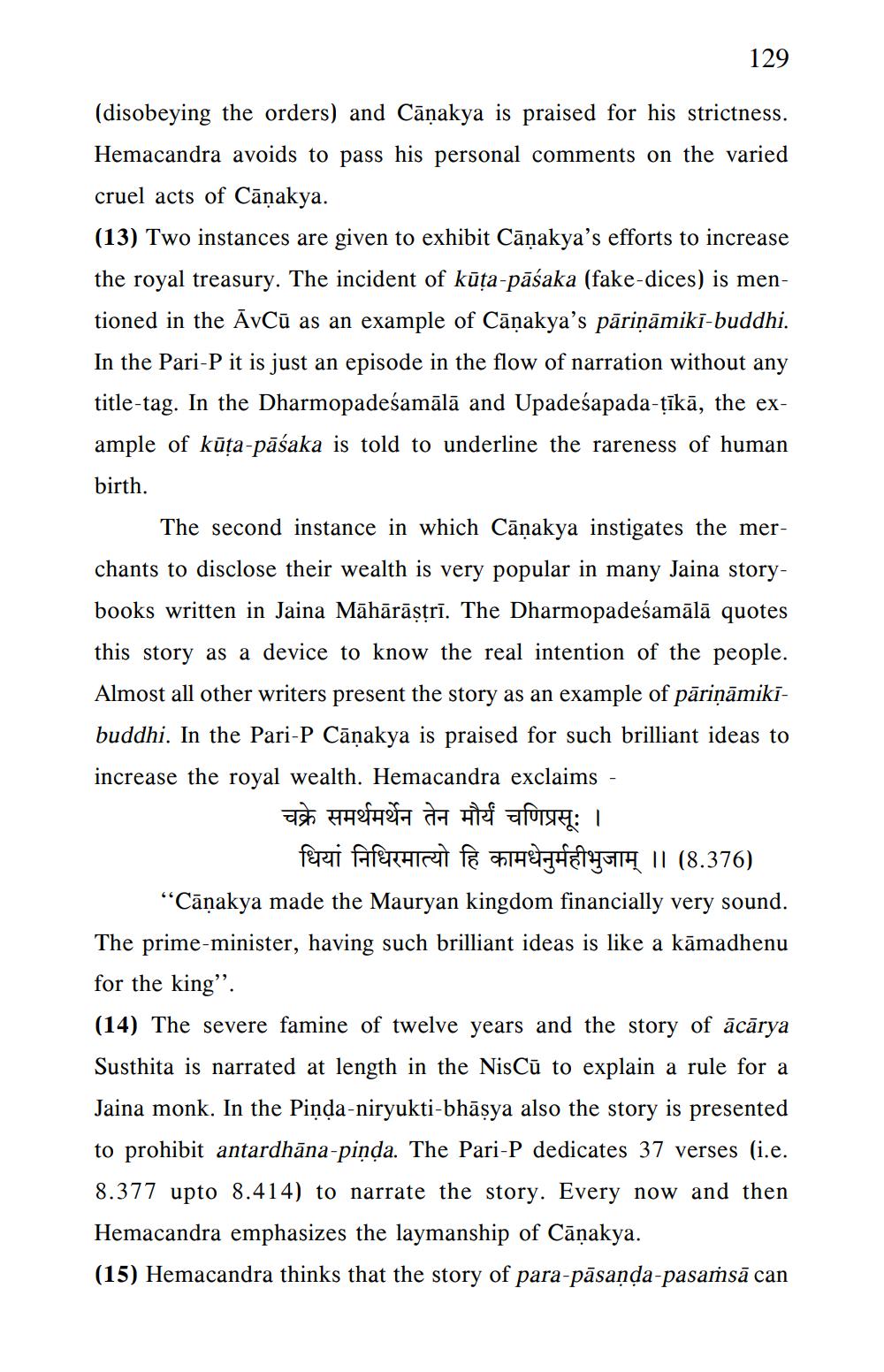________________
129
(disobeying the orders) and Cāṇakya is praised for his strictness. Hemacandra avoids to pass his personal comments on the varied cruel acts of Cāṇakya.
(13) Two instances are given to exhibit Caṇakya's efforts to increase the royal treasury. The incident of kūṭa-pāśaka (fake-dices) is mentioned in the AvCū as an example of Cāṇakya's pāriņāmikī-buddhi. In the Pari-P it is just an episode in the flow of narration without any title-tag. In the Dharmopadeśamālā and Upadeśapada-ṭīkā, the example of kūṭa-pāśaka is told to underline the rareness of human birth.
The second instance in which Caṇakya instigates the merchants to disclose their wealth is very popular in many Jaina storybooks written in Jaina Māhārāṣṭrī. The Dharmopadeśamālā quotes this story as a device to know the real intention of the people. Almost all other writers present the story as an example of pāriņāmikībuddhi. In the Pari-P Cāṇakya is praised for such brilliant ideas to increase the royal wealth. Hemacandra exclaims
चक्रे समर्थमर्थेन तेन मौर्यं चणिप्रसूः ।
धियां निधिरमात्यो हि कामधेनुर्महीभुजाम् ।। (8.376)
"Caṇakya made the Mauryan kingdom financially very sound. The prime-minister, having such brilliant ideas is like a kāmadhenu for the king".
(14) The severe famine of twelve years and the story of ācārya Susthita is narrated at length in the NisCu to explain a rule for a Jaina monk. In the Pinda-niryukti-bhāṣya also the story is presented to prohibit antardhana-pinda. The Pari-P dedicates 37 verses (i.e. 8.377 upto 8.414) to narrate the story. Every now and then Hemacandra emphasizes the laymanship of Cāṇakya.
(15) Hemacandra thinks that the story of para-pāsaṇḍa-pasaṁsā can




